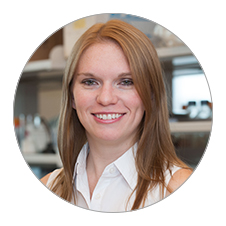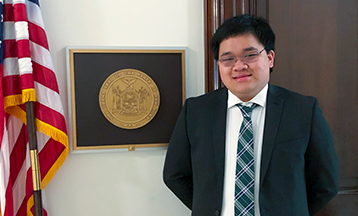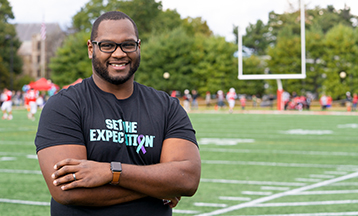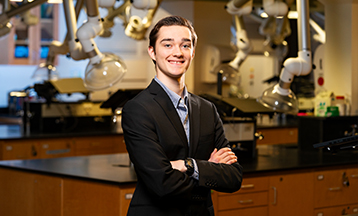-
About
Marist Commencement
Celebrating the Class of 2025
• The graduate ceremony will be held on Friday, May 23.
• The undergraduate ceremony will be held on Saturday, May 24.About
-
Academics
Marist Commencement
Celebrating the Class of 2025
• The graduate ceremony will be held on Friday, May 23.
• The undergraduate ceremony will be held on Saturday, May 24.Academics
-
Admission & Financial Aid
Marist Commencement
Celebrating the Class of 2025
• The graduate ceremony will be held on Friday, May 23.
• The undergraduate ceremony will be held on Saturday, May 24.Admission & Financial Aid
-
Student Life
Marist Commencement
Celebrating the Class of 2025
• The graduate ceremony will be held on Friday, May 23.
• The undergraduate ceremony will be held on Saturday, May 24.Student Life
- Athletics
Kelly Henry Image

Kelly Henry
Manlius, NYAcademic School
ScienceCampus
New YorkDr. Kelly Henry ’11 is a Research Fellow at Memorial Sloan Kettering Cancer Center in New York City. She received her B.S. in Chemistry from Marist and completed a Ph.D. in chemistry at Syracuse University.
What brought you to Marist originally?
I have an older cousin who went to Marist (Thomas Henry ’00), so this is how I originally knew about the school. We’re both from Manlius, New York (a suburb of Syracuse), and it’s not that common for people from around there to apply to Marist. However, I really wanted to get away for college, and, although Marist is only about 3 and ½ hours from home, it was still nice to be somewhere new and start fresh without anyone I knew.
Each time I visited the College, I was really impressed with the campus and the people I met. I went to Accepted Students Day in April 2007 and felt the joy and presence of the current students; they seemed genuinely happy and excited to recruit new students. One of the most important deciding factors truly was the campus, and to this day I have still never been on a college campus that is as beautiful as Marist’s.
What are some highlights of your Marist experience, both academics and extracurricular activities?
One of the highlights of Marist was being on the Hudson River. When I come back to Poughkeepsie, even if I am just passing through, I always stop by the river because it has always been my “happy place.” I always loved to go down to the dock to think, study, or hang out with friends.
The highlights of my academic experience included the very tight-knit community I experienced in chemistry. There weren’t many students in this program, so we all knew each other quite well, and all of the professors knew us. In this way, we were able to get the individual attention and encouragement to succeed. The chemistry majors had access to a computational lab in Donnelly Hall with computers and a white board, and it was great to go there and get away and be able to have your own space to study and get work done with your fellow majors.
I was also quite involved in WMAR (Marist’s radio station). I was the secretary of the club for a few years, and had my own show for two years as well. We helped set up “PandeMAYnium,” a hugely successful music festival that recruited local bands and coincided with the spring concert (which that year happened to be Third Eye Blind, my favorite band). Third Eye Blind usually made Poughkeepsie a regular stop on their tour each year, and I had the opportunity to see them multiple times over the years at the Chance Theatre in Poughkeepsie as well.
What’s your favorite Marist memory?
This is a tough one, but one of my favorite Marist memories was River Fest senior year. It was one of the few times where everyone I had gotten to know over the years, whether they were old friends, roommates, or people I met through classes, were all there to celebrate our upcoming graduation. Simply put, it really was just the best time.
Were there specific faculty members who really had an impact on you?
All of the members of the Chemistry Department, and most notably the women, have had a lasting impact on my life. My mentors included Elisa Woolridge, Lisa Stephens, and Jocelyn Nadeau. Without their support and enthusiasm for science and mentorship, I am not sure I would have continued in chemistry. I keep in touch with them to this day and come back every few years to give a talk and update on my career trajectory.
Outside of chemistry, I always had a connection with my photography professor Dan McCormack, with whom I took many classes. He is an extremely talented local photographer, and he taught me everything I know about photography and printing, from very basic to quite advanced techniques. I deeply appreciate the simple yet complex nature of black and white photography, how it works, and its connection to chemistry. As such, I hope to continue this hobby in the future if and when I have the space and the means to do so. I am still quite proud of the work I did in Professor McCormack’s classes.
I also have fond memories of Professor Karen Scialabba, who was my advanced ethics professor for the class “Marriage and Family.” She is an incredibly smart woman who had so much experience to share, and she taught her class way beyond the textbook. Her class gave me valuable perspective on the future and forced me out of my comfort zone on a number of real-life topics.
How did your Marist educational experience prepare you well for graduate school and career success?
I was very fortunate to have the opportunity to build a productive rapport with the Marist chemistry faculty because of the small classes and the intimate environment. I was strongly encouraged to go to graduate school and pursue a career in chemistry. At Marist, I was able to experience all facets of the college experience, and I really think that fostered my ability to transition into young adulthood and my career with confidence and success.
What do you do at Memorial Sloan Kettering?
At MSK, I develop and apply targeted radiopharmaceuticals to diagnose disease and assess response of various therapeutics. I currently work on a number of radiometal-based projects for molecular imaging. My main research passion is utilizing molecular imaging to interrogate oncogenic signaling and target engagement of small-molecule pathway inhibitors, as well as investigating the spatial and temporal dynamics of biological processes at the interface of cancer and neuroinflammation. As a senior postdoctoral fellow, my day-to-day schedule is usually full of experiments ranging from cell work to radiochemistry to animal studies, as well as meetings, grant writing, and mentoring junior scientists (technicians, graduate students, and junior postdocs).
Are there any unique experiences you’ve had as a result of your work?
The most amazing experiences I’ve had are the opportunities to travel the world and present my research, and this is thanks to the encouragement and generosity of my current PI, Jason Lewis. I have been to two international radiochemistry conferences in Europe, along with multiple imaging conferences across the United States.
My most significant scientific breakthrough to date is detailed in my most recent paper (Clinical Cancer Research 2018). In this project, I was able to successfully utilize a molecular imaging probe to assess target engagement of small molecule therapy and oncogenic pathway intersection in pancreatic cancer. Pancreatic cancer has quite dismal statistics and prognosis associated with it, and this project aims to solve a critically unmet need for better understanding the complicated biology of this malignancy. I presented this work in a Young Investigator Award finalist section at the Society of Nuclear Medicine and Molecular Imaging in June 2018, and as a result was invited to give a talk at Hokkaido University in Japan at their upcoming workshop at the Central Institute of Isotope Science.
Through exposure in the field and getting involved with a neuroinflammation project at Stanford University under the tutelage of Michelle James, I had the opportunity to introduce a plenary speaker at the World Molecular Imaging Congress, one of the most significant conferences in my field. I introduced Dr. Peter van Zijl, an extremely well-known scientist in the field of Chemical Exchange Saturation Transfer (CEST) MRI, MRS, fMRI techniques, and diffusion imaging.
I also met Roald Hoffmann (a Nobel Laureate in Chemistry) at my first American Chemical Society conference in graduate school. Since moving to New York City, I have attended his “Entertaining Science” cabaret at the Cornelia Street Café in Greenwich Village many times. Dr. Hoffman co-hosts this monthly event, which includes diverse topics correlating science and entertainment without the formal setting of a lecture or a symposium. Finding out about this event and being able to go regularly is both fascinating and very full circle for me.
Professionally, where do you see yourself five to 10 years down the road?
In five or 10 years, I plan to be a successful professor and/or scientist who leads a team of productive and collaborative scientists who apply molecular imaging and basic science to solve clinically relevant problems in the biomedical community to improve the therapeutic, diagnostic, and prognostic outlook of human disease.
Any advice you’d share with current Marist students?
Follow your dreams and live your truth. While it may sound oversimplified or cliché, it is absolutely necessary. Put yourself out there, network and meet as many people as you can, strive to be an articulate and professional person, and pursue your passion. Many of the opportunities you will find are all about who you know and who you get the chance to impress along the way. Don’t ever take any opportunity for granted – use them to your advantage to succeed both personally and professionally.



